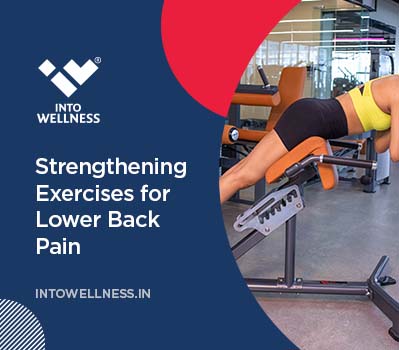No products in the cart.
Heart rate shows how far a person is or can push themselves during a rigorous exercise. A low heart rate means a person could increase the intensity of that activity, while a high heart rate could be dangerous. Cardiovascular exercises and running increase a person’s heart rate. The ideal heart rate zone for exercising and training depends on the person’s age, fitness level, specific activity levels, as well as their medical conditions (if any).
You can maximize your fitness or weight loss goals by keeping a track on the heart rate levels.
What is Resting Heart Rate?
Generally, a normal resting heart rate for adults ranges from 60 to 100 beats per minute (bpm). A low resting heart rate means more efficient heart function and better cardiovascular fitness. For example, a well-trained athlete might have a normal resting heart rate anywhere around 40 beats per minute.
The simplest and the oldest method to measure your resting heart rate is to check your pulse by placing your two fingers either on your wrist or on the side of the neck. When you feel your pulse:
Number of beats in 15 seconds x 4 = beats per minute.
Many factors can influence heart rate, such as age, fitness levels, smoking habit, cardiovascular disease, emotions, body size, etc.
Consult your doctor if your resting heart rate is consistently above 100 beats a minute or if you’re not a trained athlete and your resting heart rate is below 60 beats a minute.
How to Determine Your Ideal Heart Rate While Running?
Heart rate, or pulse, is measured in beats per minute (bpm), as you pace-up and your exercise intensity increases, so does your heart rate.
Blood circulates to your muscles to provide oxygen and nutrients they need to keep going. You can determine your target heart rate for running using a formula based on your age and maximum heart rate:
220 – Your Age = Maximum Heart Rate.
For example, if you’re 30 years old your maximum heart rate can be 190.
You should train at 50 to 85% of your maximum heart rate.
You can pace up if your heart rate drops below this level, to get better results of your workout. Similarly, you should slow down if your heart rate rises beyond these levels. A heart rate monitor can help you keep a track of these levels while exercising.
What is Heart Rate Training?

Heart rate training relies on beats per minute (bpm) as a guide for how fast you should run, and it uses zones based on your maximum heart rate.
Listed below are 5 different zones:
- Zone 1: 50 to 60% of maximum heart rate.
- Zone 2: 60 to 70%
- Zone 3: 70 to 80%
- Zone 4: 80 to 90%
- Zone 5: 90 to 100%
Depending on your goals, you can choose your training zones, for example marathon runners, for example, elite athletes and sprinters may focus more of their training in zones 4 and 5. You can use a heart rate monitor to keep track of your training.
How to Monitor Heart Rate
By measuring the heart rate zone, while running an individual can determine if they are hitting all the prerequisite heart rate zones.
As mentioned earlier, counting the pulse rate by hand is the most dated and basic way of testing the heart rate.
There is an easier way to do it that is by wearing a wrist watch or a chest monitor that reads your heart rate. An array of wearable products are available online that can help with the same.
Avoid Overexerting Yourself
Keeping your heart rate above the maximum range over a longer period of time can be fatal, especially if you are new to exercising. A study on recreational hockey players found that players who had their heart rates above the maximum level while playing had a hard time recovering post exercise, it also put them at a risk for cardiac events such as arrhythmias, chest pain and discomfort.
It is always recommended to back off a bit if you are constantly hitting the maximum heart rate while running and stop exercising if it makes you feel lightheaded, dizzy or ill.
How Does Exercising Positively Impact Heart Rate Over Time
As discussed above, the intensity and type of exercises positively affects the heart rate in many ways and in turn contributes to having good health in many ways. Listed below are some of the benefits of exercising on heart rate:
Help Reduce Blood Pressure
A healthy heart pushes out more blood with each beat, enabling it to function more efficiently, decreasing stress on the heart and surrounding arteries, and in turn potentially reducing blood pressure. Cardiovascular exercises are advised in case you have high blood pressure, to help reduce it.
Reduces Stress Levels and Improves Work Efficiency
For the body to adjust to a faster pace, it may take some time especially if you are beginning a new workout routine that includes cardio exercises. But as the routine sets in, the body also starts to pull oxygen from the blood at a faster rate. As a result, people who workout regularly have a heart that performs better even under stressful conditions, regular cardio exercises also helps in faster recovery of the body post exercise.
Improves Blood Flow
Healthy heart is equal to a healthy body! Regular cardio-based physical activity enables the heart to achieve improved blood flow in the small vessels around it. Better circulation in these areas may also prevent heart attacks.
Decreases Risk of Heart Diseases
Studies have shown that regular exercise helps reduce the risk of coronary heart disease as much as 21% for men and 29% for women. Physically active people or individuals who regularly exercise have 20% less chance of having a stroke. Blood sugar levels are thus maintained in a healthy range and, in turn, reduce the risk for prediabetes and type 2 diabetes.
Lower Cholesterol
Many studies show that cholesterol can be improved and maintained with exercise, changes such as improved amounts of HDL cholesterol and lowering the amount of bad LDL cholesterol by almost 10 percent.
Conclusion
One the best way to measure how efficiently your body functions while running is by heart rate training. It is vital to monitor the body conditions and not push yourself to complete exhaustion. No, it is not easy to maintain the heart rate in a comfortable zone, hence work with a running coach or fitness professional, they can help by chalking out workouts that are appropriate as per your limits and can also modify it as per your growth. Do visit a doctor before starting a new running or fitness routine.







